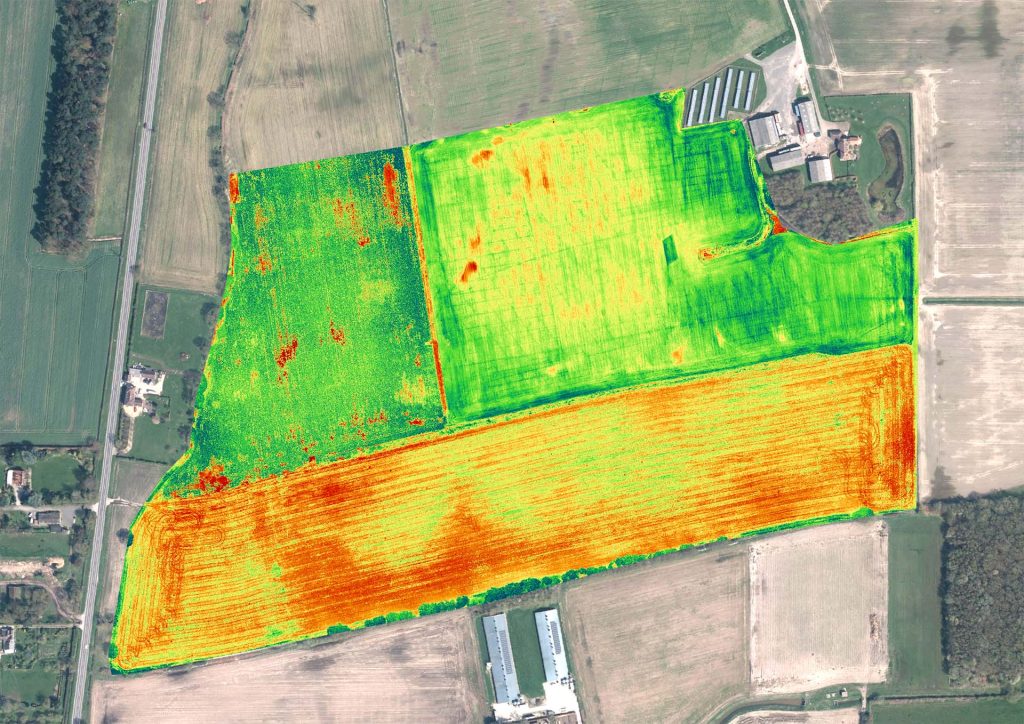A technique borrowed from precision agriculture, this aerial survey method uses a cluster of light sensors tuned to specific light wavelengths or ‘bands’ to detect changes in plant health which aren’t visible to the human eye.
The data can be used by agronomists and foresters for a range of monitoring and inventorying procedures, for example identifying drainage problems, disease or invasive species. It can also be used as an archaeological prospection technique for detecting cropmarks that would otherwise be invisible, faint or unclear.
